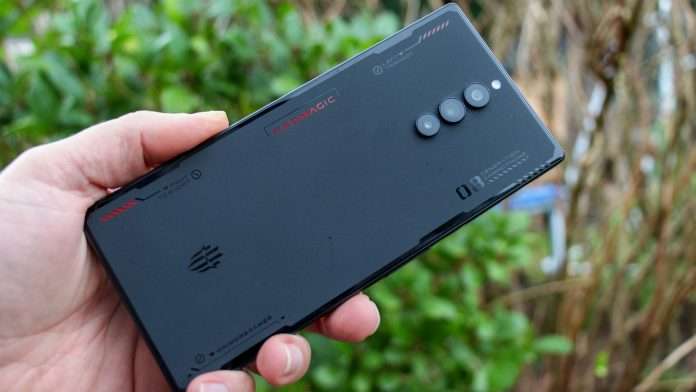Gaming phones remain a small industry, but one that is currently being supplied by several tempting products. Nubia’s famous Redmagic brand has been refreshed with the 8 Pro, which appears to deliver high-end gaming performance but at a price that is firmly mid-range at $649/£579. I’ve pressed the start button to see if the Redmagic 8 Pro is a contender.
Design & Build
- Modern, squared-edge design
- Built-in fan
- No IP certification
Even before you pull the gadget out of the package, you can tell it’s a gaming phone. Nubia uses a silver livery for the box, with techno-style labeling that is slightly more sophisticated than some of the more garish ones I’ve seen in the past. Removing the cover shows some very unique artwork splashed on the inside box, displaying a fantastic robotic figure standing before a spacecraft and an anime-style woman rushing through a future metropolis on her motorcycle. It’s a welcome difference from the harsh white box that most current phones come in.
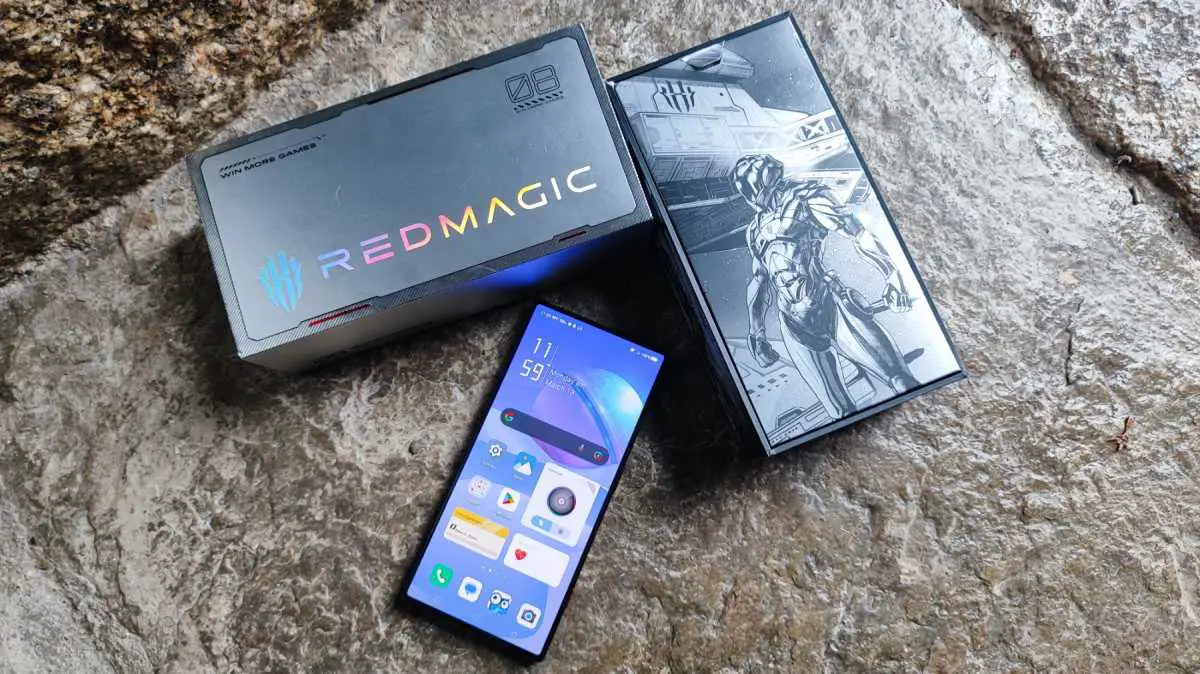
With all of this flash on show, you may be concerned that the phone will be oddly shaped, with many light parts and other embellishments that make gaming mouse and keyboards appear a little shabby. Fortunately, this is not the case.
The Redmagic 8 Pro has a really appealing design. It measures 164 x 76.4 x 8.9mm and weighs 228g, making it a big but not uncomfortable handset. There are no rounded corners or curved displays here, since the design is angular, with squared off edges all around, similar to the current Sony Xperia series.
The front panel is a 6.8-inch AMOLED display with very small bezels around the corners and no notch, due to the selfie camera and fingerprint sensor being positioned beneath the screen. In terms of dependability, the latter was hit-or-miss, with pressings frequently resulting in my print not being recognized. This might be because my latest daily driver has been the Xiaomi 12 Lite, which puts the sensor a bit lower down. If I took my time, the outcomes were more consistent, suggesting muscle memory may be the culprit.
Read also : Samsung Galaxy S24 Leaks
The fan intake and outlets on either side of the frame, 520Hz touch sensitive trigger buttons along one edge, stereo speakers on the top and bottom of the device, and a headphone jack for low latency audio are all indications that this is a gaming-focused device. The red Game Space Switch activates the specific game modes, allowing you to adapt the system to your particular tastes. More on it in a moment.

A matt coating on the back panel offers the Redmagic 8 Pro much-needed grip, and the design is similar to that on the box’s exterior cover. The three cameras in the upper area of the display are all somewhat elevated, which means the phone won’t lie flat on a table while laying on its back, even when in the provided hard-plastic cover.
The charging connector is, as expected, USB-C, but it also serves as an HDMI output, so you could connect it to a monitor if you want to play games on a larger screen.
Unfortunately, no IP rating is specified, so you’ll want to keep the phone away from water or dust, limiting any bath-time gaming sessions, but the 6,000mAh battery means you’ll be able to play your favorite games for the rest of the night once your ablutions are done.
You get a 65W charger (thank you! ), a USB-C charging cable, the aforementioned case, and a SIM tray ejection tool in the box.
Screen & Speakers
- 6.8-inch AMOLED, 120Hz display
- Gorilla Glass 5
- Stereo speakers
A 6.8-inch, 20:9 FHD+ AMOLED display dominates the front panel, supported by the previously stated under-screen components. The narrow bezels around the display make it feel nearly like an edge-to-edge screen, and the selfie camera is neatly camouflaged on this model. Seriously, unless you go looking for it, you won’t see it. When used in landscape position, which is where a gaming device would spend the most of its time, this makes the display feel vast and uninterrupted. It’s also wonderful for watching videos because there’s no bothersome dot at one end or a huge notch to worry with.
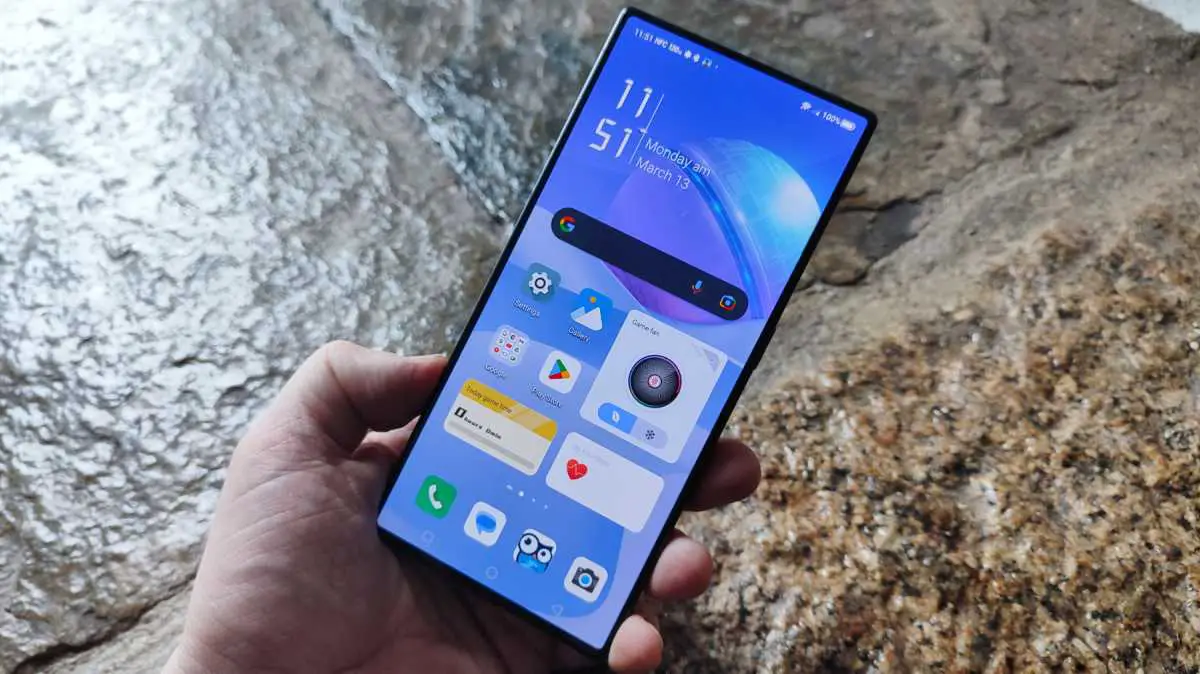
Since last year’s Redmagic 7 Pro, which was a tad on the dull side, brightness has received some attention. Nubia says that when all cylinders are working, you can get a maximum brightness of 1,300 nits, however this won’t be the case most of the time, especially if you want any battery life at all.
In a dark room, I measured the maximum brightness with a light meter at 568 nits. This means that the Redmagic 8 Pro can handle a bright day outside while nearly blinding you with its luminosity within.
The refresh rate max out at 120Hz, which is plenty for any current phone, but you may reduce it to 90Hz or 60Hz to preserve battery life. When gaming, the phone will automatically adapt to the higher pace, so you won’t have to tinker with the settings before beginning a session.
Aside from figures, the display is colorful, smooth, and attractive to the eye, which is a good thing because avid gamers will be looking at it for hours at a time. Touch sensitivity is likewise adequate, with a maximum sampling rate of 950Hz making game characters instantaneously responsive to orders.
The twin speakers are located at either end of the gadget and provide high-quality audio. Though not as stunning as those found on the Asus ROG Phone 7 Ultimate, the sounds are strong and nicely balanced, with a full and powerful mix. When gaming, the location also becomes an issue because the speakers are usually where your hands are grasping the phone. The right side isn’t too awful because the speaker is higher up, but the left side is frequently covered, making the sound boxy.
Of course, you can use the 3.5mm headphone socket or Bluetooth earbuds to avoid this altogether, with High Definition Audio compatibility available if you have compatible headphones.
Specs & Performance
- Snapdragon 8 Gen 2 processor
- 12GB RAM
- 256GB storage
Obviously, when it comes to gaming, a lot of power is required. It’s thus gratifying that Nubia has utilized the Snapdragon 8 Gen 2 CPU in a phone with a mid-range pricing tag. With 12GB of LPDDR5X RAM and 256GB of UFS 4.0 storage, the Redmagic 8 Pro moves at a breakneck pace. If you need even more power, there’s a 16GB/512GB option available if you’re ready to spend extra.
A hard game like Genshin Impact might be difficult to launch on certain phones, but it’s a snap on the Redmagic 8 Pro. When the action picks up in the busier portions of the game, there’s no obvious slowdown or frame-rate loss. The same is true for games like Asphalt 9 and other common suspects that put strain on the processor, GPU, and temperature settings.
Nubia equips the Redmagic 8 Pro with its ICE 11.0 cooling system, which includes a graphene layer beneath the display to efficiently dissipate heat, a 20,000RPM fan with intake and outlet valves on the sides of the chassis, a double-layer vapour-chamber liquid-cooling plate, and other conductive layers and components (in total, there are ten layers). I don’t claim to understand the technology involved, but the end effect is that the device stays cool when playing games and the fan isn’t too noisy, especially if you’re using headphones.
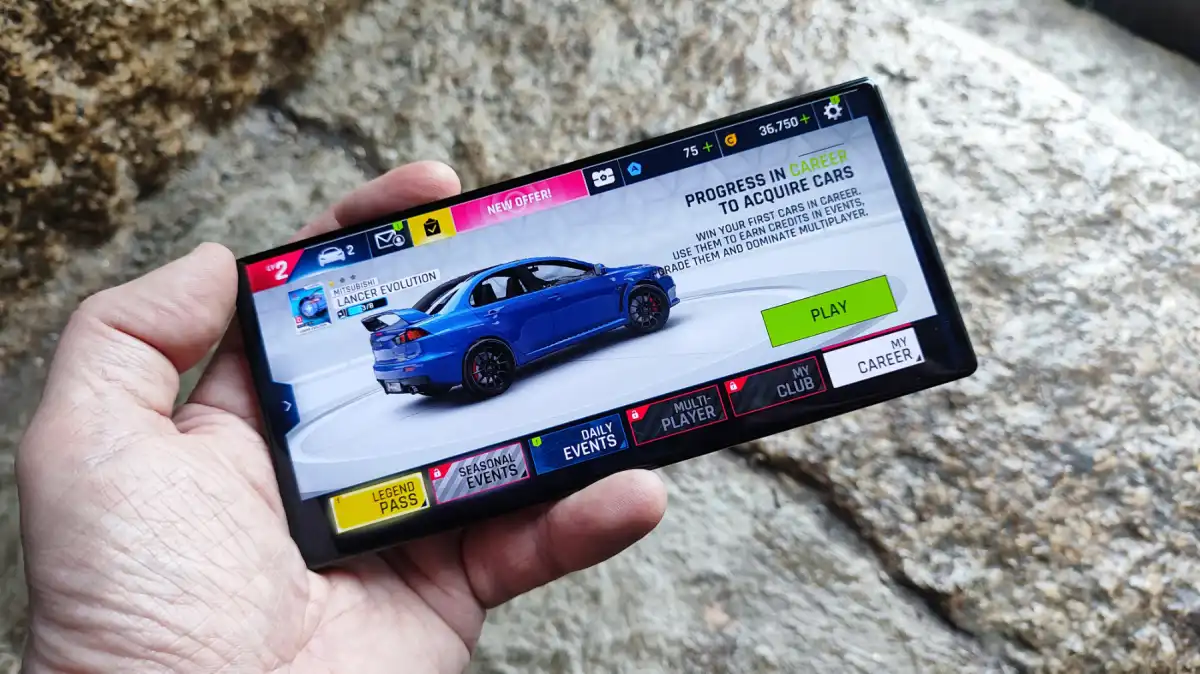
All of this efficiency and cooling means that no thermal throttling is necessary, so performance stays high while you use the phone for more demanding applications, like as gaming.
Here are the benchmark results that demonstrate how the Redmagic 8 Pro compares to its competitors:
Cameras
- 50Mp f/1.88 main camera
- 8Mp f/2.2 wide camera
- 2Mp f/2.4 macro camera
The Redmagic 8 Pro’s primary focus is gaming, but decent cameras are usually high on the list of things that people desire from their smartphones these days. The 8 Pro does poorly in this category. The main 50Mp f/1.88 shooter is outfitted with a Samsung GN 5 sensor, which is also used on smartphones such as the Samsung Galaxy S23 and Vivo iQoo 11, although the Redmagic won’t be able to compete with those rivals in terms of photographic prowess.
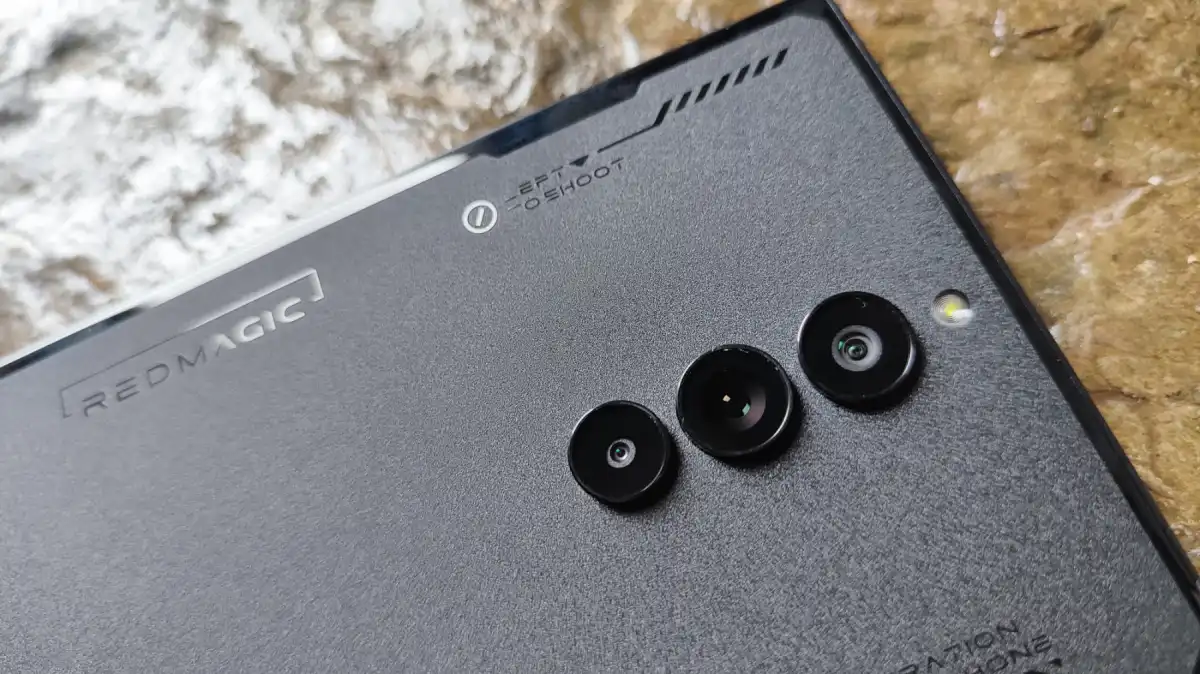
The primary camera can take some nice photographs, handling exposure and focussing effectively in mixed conditions, although the colors are a little subdued. When opposed to the typically oversaturated photographs I see on many smartphone cameras these days, this may be a welcome surprise, but it merely makes shots appear a little flat until you do some post processing.
Switching to the 8Mp ultra-wide camera allows you to incorporate some extra stuff in the photo, however owing to the positioning, the edge of my hand was frequently in the image unless I was cautious. The colors are significantly duller on the ultra-wide, and the quality suffers.
That is not to suggest they are useless. Absolutely not. Nice photographs can be captured with decent lighting, and the night mode does a fantastic job of letting you to shoot pictures where the light would ordinarily be too low (as long as you can lean the phone on a flat surface to keep it stable). In dark mode, the photos are over sharpened, which is normal because the program is trying hard to extract as much information as possible from the image.
Selfies, portraits, and macro images are decent but unimpressive, however exploring the options reveals some entertaining features to experiment with. My personal favorite was for catching light trails from passing automobiles at night. It did take several attempts to get something I liked, but I won’t fault the camera for that because I was often doing it handed. One issue is that a watermark indicating the camera’s name is enabled by default and cannot be removed from the photographs. That was a stupid concept.
The video is good, with consistent, well-focused, and well-exposed material. It can shoot 4K@60fps with pretty useable images, and if you don’t mind using up all of your storage space, it can even shoot 8K@30fps. EIS is used to smooth things out in an anti-shake mode, and it works well.
Walking beside the Redmagic 8 Pro while shooting didn’t reveal any of the bobbing produced by my movement, and there were no visible evidence that the program was cleaning things up. Moving from bright to dark gave the metering something to think about, but it performed well in dealing with something that may frequently catch cameras off guard.
The selfie camera is buried behind the display, but the image quality suffers as a result. All of my selfies were washed out and noisy. If you don’t use this function much, it’s OK, but if you enjoy taking selfies, you’ll find the phone irritating.
Here are some samples of photographs I shot using the Redmagic 8 Pro:




Battery Life & Charging
- 6,000mAh battery
- 65W fast charging (with charger in box)
- Charges to 50% in 15 minutes
- No wireless charging
In the Redmagic 8 Pro, Nubia uses dual 3,000mAh cells, giving the device an effective 6,000mAh battery. Not only is there a considerable amount of charge storage, but the efficiency of the cooling and high-spec processor means that you may play for several hours and still have enough fuel to listen to a few podcasts before night.

The Redmagic 8 Pro managed 15 hours and 35 minutes in our usual battery benchmark, so it should keep even the most passionate gamers playing all day. That is some tremendous lifespan.
If your actions do exhaust the battery, you won’t have to wait long to get back in the game because the accompanying 65W charger will restore 51% of power in only 15 minutes. While a complete recharge takes only about 40 minutes. That’s really impressive work.
Software
- Android 13
- Redmagic OS 6.0
- Dedicated Game Mode
The software on the Redmagic 8 Pro has two aspects. The first is the general Android 13 implementation, which is wrapped in the Nubia Redmagic OS 6.0 veneer. This is relatively normal material, with little bloat, however there were a few moments where I came across Chinese text rather than English.
One missing that I’ve noticed on other Chinese phones is the inability to set up Google Pay. I’m not sure if this is a regional issue, however in the UK, it appears that this specific handset was unwilling to cooperate.
Sliding the red button on the device’s side activates the specific gaming software, which has a number of intriguing features. The ability to map the shoulder buttons so that you can utilize them in games is the most beneficial. I must admit that this was more difficult than expected, with Nubia’s instructions on how to enter setup mode proving useless.
A swipe gesture was supposed to show an additional choice for selecting the mapping function, however it never materialized. I figured it out eventually, but it felt rushed and more complex than necessary.
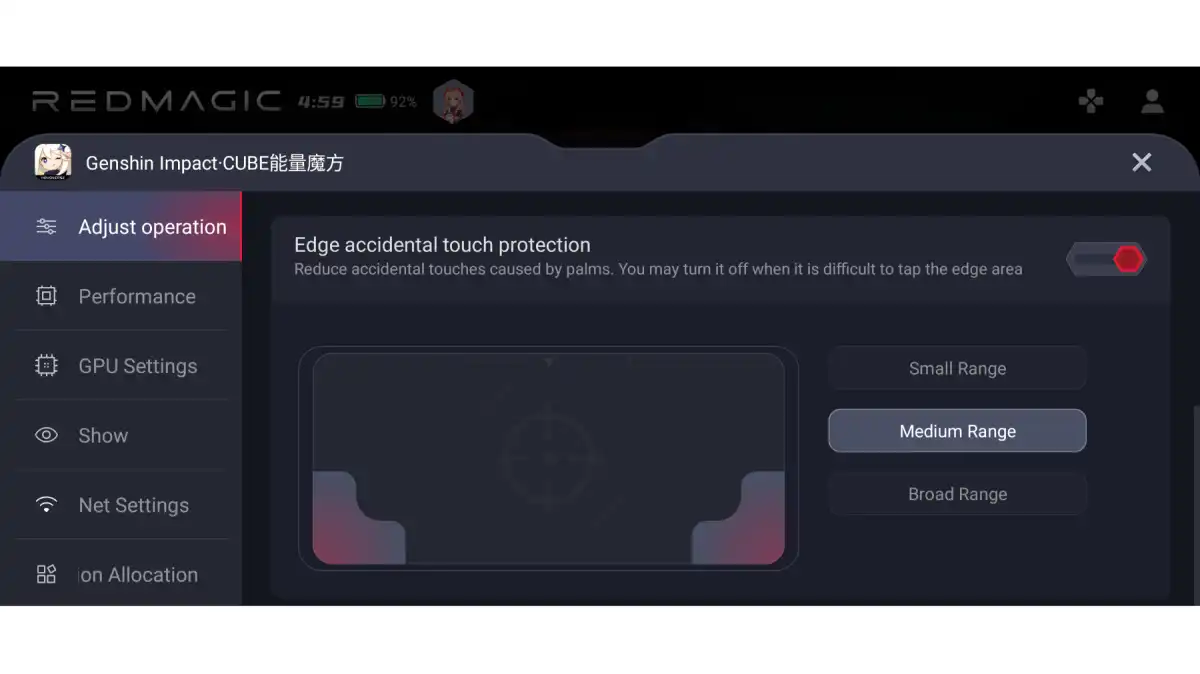
With Game Mode enabled, you may fine-tune a number of parameters and ensure that the acceleration is functioning for the games you’re playing. Hopefully, by the time you read this, the perplexing components will have been ironed out, allowing you to focus on the other options on offer.
Price & availability
With its high-end specifications and dedicated gaming technologies, you may expect this to be a costly handset to purchase. That, however, is not the case. If you choose the basic model with 12GB of RAM and 256GB of storage, it costs a fairly reasonable $649/£579. Step up to the 16GB/512GB model and you’ll still spend $799/£709, which is extremely fair for a Snapdragon 8 Gen 2 handset.
This places it in the same price range as the Black Shark 5, which costs roughly $899/£729 for a unit with the same configuration as the standard Redmagic. The ROG Phone 6 costs $899.99/£899.99 and is powered by a Snapdragon 8+ Gen 1 processor.
Verdict
The Redmagic 8 Pro is a great option if you’re searching for a specialized gaming phone that can still handle daily tasks. The combination of excellent performance with good-enough cameras, displays, and other general amenities at this price range makes the whole package seem like a genuine value. Play to win.
Specs
- 6.8-inch FHD+ AMOLED display, 1116×2480, 20:9, 120Hz, 960Hz touch sampling rate, 1300 nits max brightness, Corning® Gorilla® Glass
- Qualcomm® Snapdragon™ 8 Gen 2
- Adreno Red Core 2
- REDMAGIC OS 6.0 based on Android 13.0
- 12GB LPDDR5X Memory
- 256GB UFS 4.0 Storage
- ICE 11 Multi-Dimensional Cooling System
- 20,000 RPM high-speed turbofan
- 50MP f/1.88 main camera
- 8Mp f/2.2 wide camera
- 2MP f/2.4 macro camera
- 16MP, 2nd generation under-display-camera (UDC) selfie camera
- Dual Nano SIM
- 5G
- Wi-Fi 7 802.11b/g/n/ac/ax/be (Tri-band 2.4G, 5G, 6G) with HBS support
- Bluetooth 5.3
- GPS, AGPS
- NFC
- 6000mAh Dual Cell Battery, with 65W fast charging
- 3.5mm headphone jack
- 163.98mm x 76.35mm x 9.47mm
- 228g


